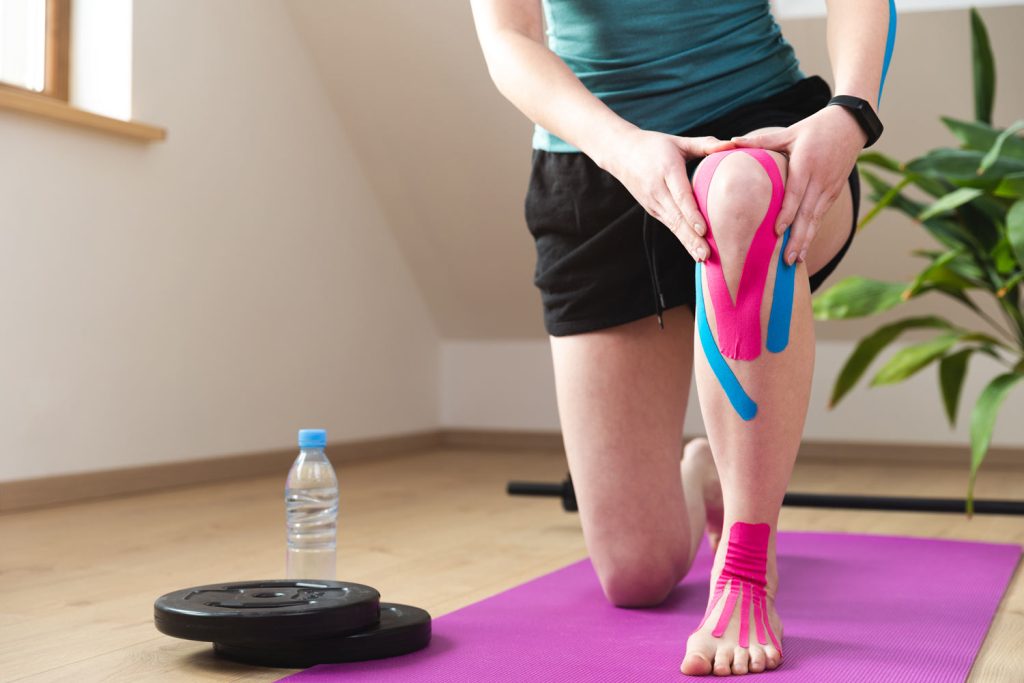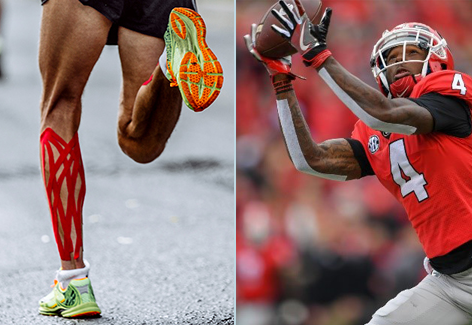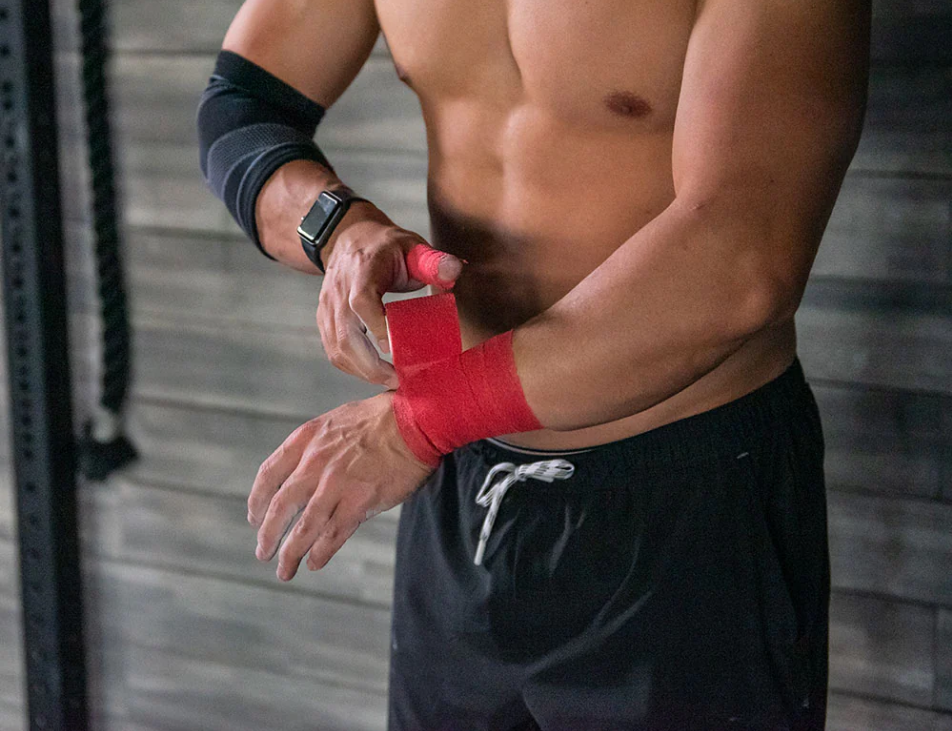Basic Techniques for Applying Kinesiology Tape
Whether you’re looking to manage heel pain, support recovery from a sprained ankle, or enhance athletic performance, this article will instruct you to do it properly.
Preparation and Skin Care
Start by cleaning the area with soap and water, removing oils, lotions, or any debris that could interfere with adhesion. For those with sensitive skin, applying sport tape made of non-irritative material can protect the skin from potential irritation.
Cutting and Application Technique
Measure the tape to cover the affected area adequately, adding extra length for the anchor points. Cut the tape with sports tape scissors to achieve clean edges that won’t fray. Rounding the corners can also help prevent the tape from peeling off prematurely.
Applying the Tape
Start by anchoring the end of the tape with no stretch. As you apply the tape over the muscle or joint, apply it with varying degrees of tension based on the treatment goal. For example, to support the rotator cuff or alleviate elbow pain, you might apply a moderate stretch to stabilize the area without restricting motion.
Activation of Adhesive
Once positioned, rub the tape vigorously from the center towards the edges. The heat generated from this friction activates the pressure-sensitive adhesive, enhancing the tape’s grip. This step is vital in environments where the tape might be exposed to moisture or movement, making waterproof sports tape or elastic sports tape particularly useful for athletes.
Using Different Colors and Types
Using colored sports tape like blue sports tape, red sports tape, or even purple sports tape can be beneficial for quick identification during sports activities. At Fonitaniya Sport Tape, each color can represent a different level of support or denote a specific injury type, aiding coaches and medical teams in quick assessments.
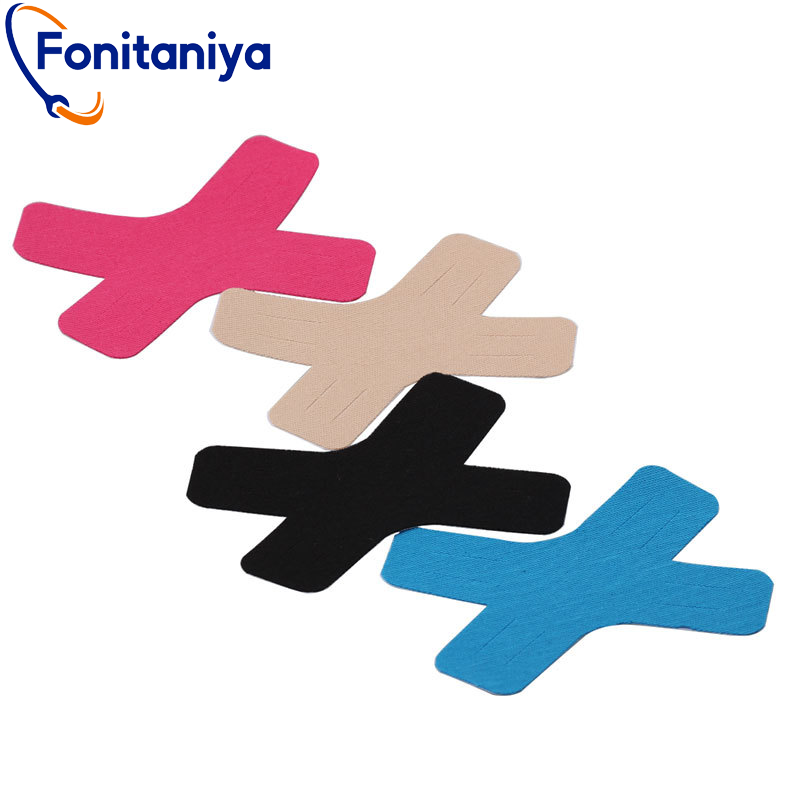
How to Apply Sports Tape for Tennis Elbow
What is tennis elbow?
Tennis elbow, or lateral epicondylitis, is a common condition characterized by pain and inflammation on the outside of the elbow. This is typically seen in athletes, but can also affect those with repetitive strain from daily activities. Properly applying sports tape can alleviate symptoms and support the healing process.
Preperation
Begin by ensuring the skin around the elbow is clean, dry, and free of oils or lotions. If the skin is sensitive, consider applying a layer of pre-wrap to protect it. This preparation helps the sports tape adhere better and remain in place longer.
Application Strategy
Activating the Adhesive
Rub the tape vigorously to activate the heat-sensitive glue, ensuring it bonds firmly to the skin. This step is crucial, especially if the sports tape is expected to withstand rigorous movements during sports or extensive daily activities.

How to Apply Sport Tape for Carpal Tunnel
What is Carpal Tunnel Syndrome
Carpal tunnel syndrome arises from pressure on the median nerve within the wrist’s carpal tunnel. Common symptoms include pain, numbness, and tingling in the hand and arm. Sports tape can be utilized to stabilize the wrist and alleviate these symptoms by slightly elevating the carpal tunnel to reduce nerve compression.
Skin Preparation
Cleanse the wrist area thoroughly to ensure the tape adheres properly. For those with sensitive skin, applying a sports tape and pre-wrap beneath the tape can prevent irritation.
Tape Application Steps:
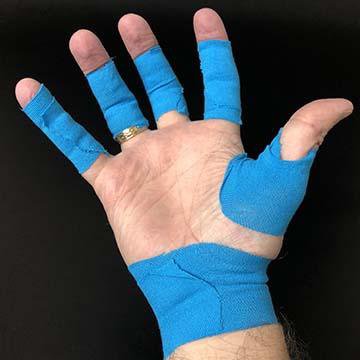
How to Apply Sports Tape for Tendonitis
What is Tendonitis?
Tendonitis is the inflammation or irritation of a tendon, the thick fibrous cords that attach muscle to bone. This condition can cause pain and tenderness just outside a joint. While it can occur in any of your tendons, it’s most commonly found around shoulders, elbows, wrists, knees, and heels.
For conditions like tendonitis elastic sports tape can provide the necessary support without limiting joint mobility too much.
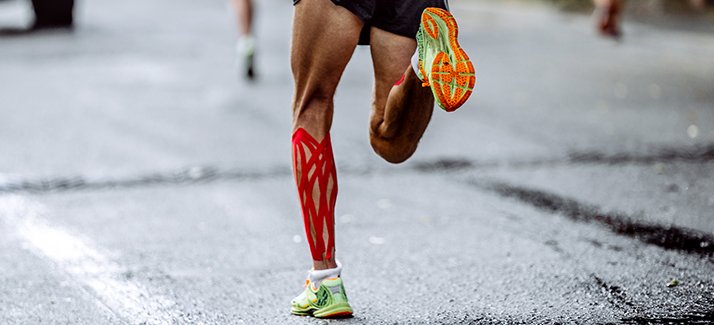
Tape Application Method:
Are There Any Downsides to Using Sports Tape?
Skin Irritation
One of the primary concerns with using sports tape is the risk of skin irritation. This can be especially prevalent in individuals with sensitive skin or allergies to adhesive materials. Opting for a sports tape for sensitive skin, which is hypoallergenic, can help mitigate this risk.
Improper Application
Incorrect application of sports tape, such as applying too much tension or placing it incorrectly, can lead to increased discomfort or even worsen the injury. It’s crucial to follow proper taping techniques or consult with a professional to ensure that the tape is applied correctly.
Dependency and Overreliance
There is a potential for dependency on sports tape for support, particularly in athletes. Overreliance on tape might deter from strengthening the muscles naturally, potentially leading to decreased muscle and joint stability over time.
Circulatory Issues
If elastic sports tape or stretchy sports tape is applied too tightly around an injured area, especially in the case of sports tape for ankle sprain or sports tape for neck pain, it can impede circulation and delay healing.
When Should You Not Use Sports Tape?
Open Wounds
Do not use sports tape if you have open wounds, infections, or any skin condition like eczema or psoriasis in the area to be taped. This could exacerbate the condition and lead to further complications.
Severe Swelling or Inflammation
While sports tape can aid mild to moderate swelling, in cases of severe inflammation or swelling, especially involving acute injuries like a sprained ankle, it’s crucial to seek medical attention first. Taping might restrict necessary blood flow and delay proper diagnosis and treatment.
Allergic Reactions to Adhesive
If you have a known allergy to adhesives, avoid using sports tape. There are hypoallergenic versions like sports tape for sensitive skin, but it’s best to perform a patch test or consult with a healthcare provider before use.
Lack of Proper Training
Applying sports tape, such as sports tape for knee support or sports tape for elbow pain, requires specific techniques. Incorrect application can lead to ineffective results or worsen the injury. It’s advisable to receive proper training or consultation from a physical therapist or a trainer before self-applying sports tape.
Fractures or Severe Joint Injuries
Never use sports tape as a primary treatment for fractures or severe joint injuries where immobilization with a medical-grade brace or cast is required. Sports tape provides support but not the rigid stabilization needed for severe injuries.
How to Safely Remove Sports Tape
If the tape is sticking too tightly, you might consider applying a small amount of baby oil or a commercial adhesive remover around the edges of the tape. This helps in loosening the grip of the tape, especially for waterproof sports tape or elastic sports tape, which are designed to adhere strongly.
Start by slowly peeling back one corner of the tape. Always pull the tape back over itself, rather than pulling it away from the skin at a 90-degree angle. This technique will reduce the risk of skin irritation or damage.
Use one hand to hold the skin down near the tape line as you gently pull the tape off with the other hand. This helps in minimizing the pulling effect on the skin and can be particularly helpful for areas with thin or sensitive skin.
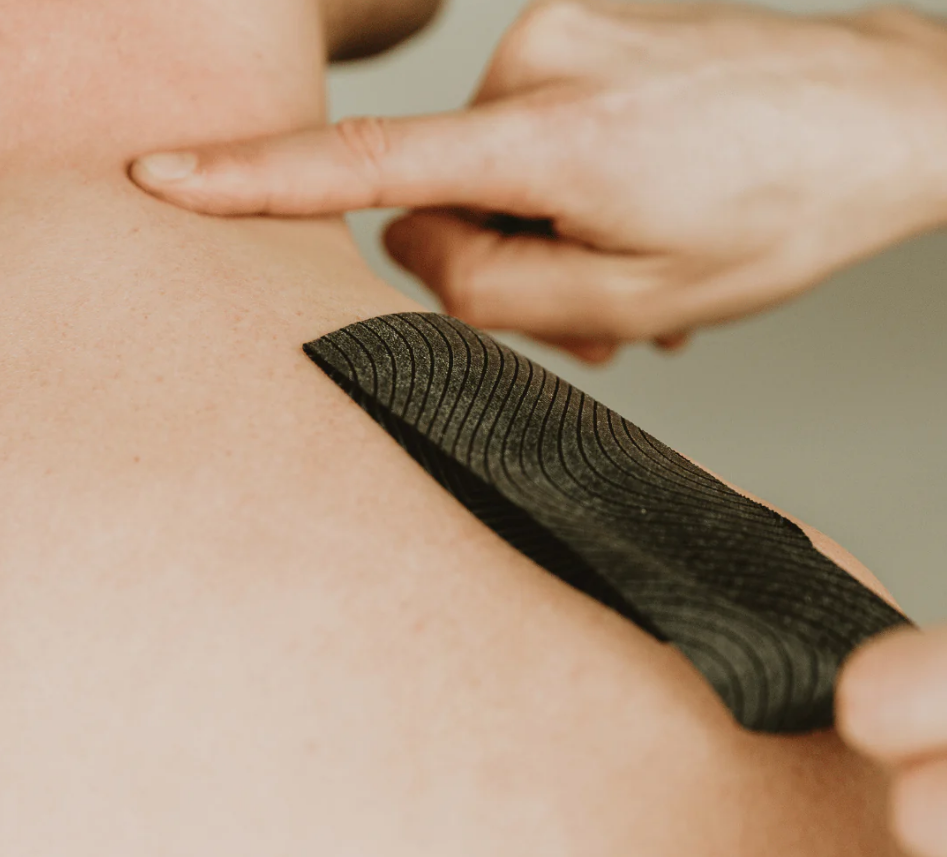
Conclusion: The Enduring Benefits of Sports Tape
The efficacy of sports tape in enhancing athletic performance and aiding recovery is complemented by its psychological benefits. Users report not only physical support but also a boost in confidence and mental assurance when wearing sports tape, knowing they are taking proactive steps to care for their body.
Here at Fonitaniya, we pride ourselves on crafting high-quality sports tape that meets the rigorous demands of all our users. Our sports tape options are designed to suit a variety of needs and preferences.
Our commitment extends beyond product quality. We are dedicated to advancing the field of sports and medical tape through continuous research and innovation. Our aim is to provide products that not only support physical healing but also enhance overall quality of life.

Join Our Community
We invite you to explore our range of sports tape products and join a community that values health, wellness, and peak performance. Whether you are dealing with an ankle sprain, managing discomfort in your elbow, or simply seeking a preventive measure to enhance your athletic endeavors, Fonitaniya is here to support every step of your journey.
FAQs
How do you apply sport tape correctly?
Start by cleaning the skin, then place an anchor strip, layer support strips as needed, and secure with a locking strip.
What’s the difference between sport tape and kinesiology tape?
Sport tape restricts movement to stabilize joints, while kinesiology tape allows a range of motion and enhances blood flow.
How often should you change sport tape?
Replace sport tape every one to three days, or sooner if it loosens or becomes uncomfortable.
Can sport tape prevent injuries?
Yes, when applied properly, sport tape can help stabilize muscles and joints, reducing the risk of injury during physical activity.
Is sport tape waterproof?
Some sport tapes are waterproof, making them suitable for activities where you might sweat or get wet.
How long can you wear sport tape?
It’s best not to wear sport tape for more than three days at a time to avoid skin irritation.
Can you apply sport tape by yourself?
With practice and proper technique, you can apply sport tape yourself for common injuries like sprains or tendon support.
What should you do if you experience pain or discomfort from sport tape?
Remove the tape immediately if you experience any pain, discomfort, or skin irritation, and consult a healthcare professional if necessary.

